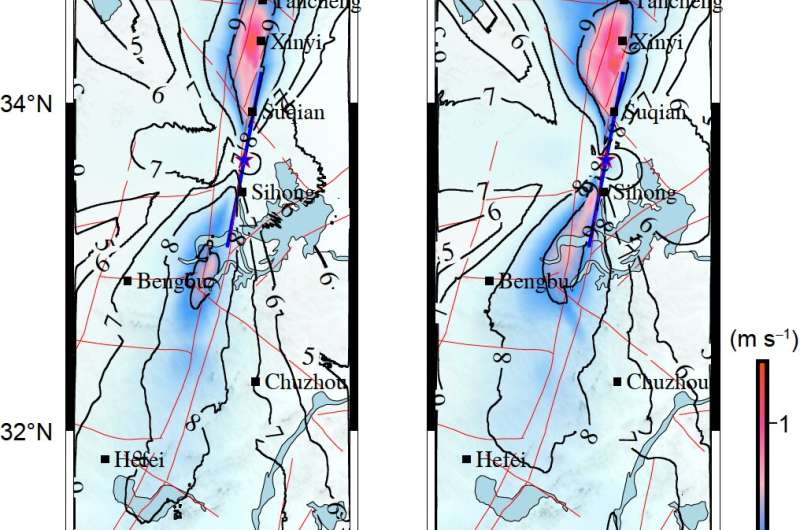This article has been reviewed according to Science X's editorial process and policies. Editors have highlighted the following attributes while ensuring the content's credibility:
fact-checked
peer-reviewed publication
trusted source
proofread
Study demonstrates self-similar fractal stress is more suitable for destructive scenario earthquake simulation

Scenario earthquakes are useful in assessing earthquake hazards along active faults. However, determining the sources of destructive scenario earthquakes, particularly when dealing with heterogeneous stresses, can be challenging.
Researchers from University of Science and Technology of China conducted a study on the Tanlu Fault, the largest strike-slip fault in eastern China, demonstrating that self-similar fractal stress is more suitable for characterizing the sources of scenario earthquakes. Their paper is published in the journal Science China Earth Sciences.
The study concentrated on the Xinyi-Sihong segment of the Tanlu fault, an area known to potentially sustain a M7.5 earthquake. The hypocenter was placed near 10 km depth around Suqian, where a noticeable contrast between high and low velocities indicates a potential nucleation point. The team effectively constrained the fault rupture length and width according to the scaling laws that govern large earthquakes.
To have a better understanding of the physical process of the rupture propagation coupling with stress heterogeneity, researchers simulated the scenario earthquake rupture process using the finite difference method. A depth-dependent background normal stress is incorporated. They utilized the self-similar fractal stress perturbation to characterize the stress heterogeneity in the fault-strike direction.
Compared with the horizontal uniform stress model, researchers have shown that the source time function of the horizontal uniform stress model closely resembles that of the Haskell model. However, the self-similar stress model aligns more closely with those observed in real earthquakes.
The dynamic rupture simulations provided insights into how various stress conditions influence the rupture behavior and ground motion. Notably, the self-similar stress model, which incorporates a shorter characteristic length, suggests a rougher initial stress and a more heterogeneous slip distribution.
To the north of the epicenter near Suqian, the models predict more intense vibrations due to the nearby low-velocity zone and high slip rates on the fault. This area is situated within the 9-degree intensity zone, highlighting the importance of targeted earthquake preparedness and building resistance capabilities.
The study underscores the importance of coupling self-similar fractal stresses in scenario earthquake simulations. By advancing our understanding of the stress heterogeneity effect in earthquake rupture propagation and ground motions, scientists can provide better guidelines for infrastructure development and disaster preparedness strategies.
More information: Feng Hu et al, Influence of self-similar stresses on scenario earthquake construction: An example along the Tanlu Fault, Science China Earth Sciences (2024). DOI: 10.1007/s11430-023-1239-8
Journal information: Science China Earth Sciences
Provided by Science China Press



















